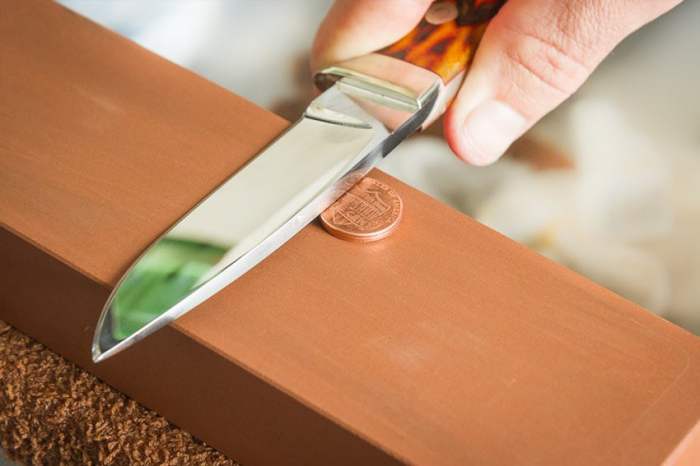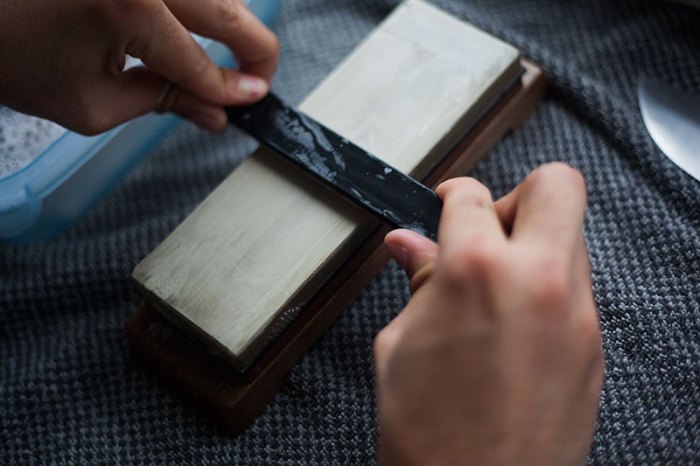Introducing may sharpen knives in addition to its primary function., an in-depth exploration into the multifaceted capabilities of knives that extend beyond their traditional role of cutting. This article unveils the advantages, techniques, and safety considerations of utilizing knives as sharpening tools, providing a comprehensive guide to this versatile functionality.
Delving into the topic, we examine the types of knives most suitable for sharpening, the different techniques involved, and the applications where knives have proven their worth as effective sharpening instruments. Through real-world examples and expert insights, we uncover the practical benefits and potential hazards associated with this unique use of knives.
Utility Beyond Primary Function

Knives, traditionally known for their cutting capabilities, often possess additional functions that extend their utility beyond their primary purpose. This versatility makes them indispensable tools in various settings, offering practical advantages and enhanced functionality.
Advantages of knives serving multiple roles include increased convenience, reduced need for additional tools, and enhanced efficiency. However, it is important to consider potential disadvantages, such as possible damage to the knife’s blade or reduced sharpness over time due to additional usage.
Sharpening Capabilities: May Sharpen Knives In Addition To Its Primary Function.

One notable secondary function of knives is their ability to sharpen other objects. This capability stems from the knife’s sharp edge, which can be utilized to create or restore a sharp edge on various materials.
Knives can be used to sharpen a wide range of objects, including pencils, scissors, and even other knives. The technique involves holding the object at a slight angle against the knife’s edge and applying gentle pressure while moving it along the blade.
Different sharpening methods exist, each tailored to the specific object being sharpened.
Types of Knives Suitable for Sharpening
Not all knives are equally effective for sharpening purposes. Certain types of knives possess characteristics that make them particularly suitable for this task.
- Fixed Blade Knives:Fixed blade knives, with their sturdy construction and rigid design, provide a stable platform for sharpening. They offer precise control and can withstand the pressure required for sharpening.
- Chef’s Knives:Chef’s knives, known for their versatility, feature a wide, flat blade that is ideal for sharpening a variety of objects. Their large surface area allows for efficient sharpening.
- Utility Knives:Utility knives, with their thin, sharp blades, are well-suited for sharpening delicate objects or creating fine edges. Their precision and maneuverability make them ideal for intricate sharpening tasks.
Techniques for Sharpening with Knives
Sharpening with knives requires proper technique to achieve optimal results. The following steps provide a general guide for sharpening various objects using a knife:
- Hold the object securely:Securely hold the object to be sharpened in one hand, ensuring a firm grip.
- Position the knife:Hold the knife in your other hand at a slight angle against the object’s edge.
- Apply gentle pressure:Apply gentle pressure while moving the knife along the object’s edge, maintaining a consistent angle.
- Repeat the process:Repeat the process several times, alternating sides of the object as needed.
- Test the sharpness:Test the sharpness of the object by cutting or shaving a material to assess the results.
Safety Considerations

Using knives for sharpening poses potential hazards and risks that must be addressed to ensure safety.
- Sharp blades:Always handle knives with caution, as their sharp blades can cause serious cuts or injuries.
- Secure grip:Maintain a secure grip on both the knife and the object being sharpened to prevent slippage.
- Eye protection:Wear eye protection to safeguard against flying debris or accidental contact with the knife.
- Proper storage:Store knives safely in a designated location, away from children and pets.
Applications and Examples

Knives have been successfully utilized for sharpening purposes in various real-world applications and examples:
- Sharpening pencils:Knives can be used to sharpen pencils, creating a precise and durable point.
- Sharpening scissors:Knives can restore the sharpness of scissors, improving their cutting performance.
- Sharpening other knives:Knives can be used to sharpen other knives, maintaining their cutting edge and prolonging their lifespan.
Common Queries
Can all knives be used for sharpening?
No, not all knives are suitable for sharpening. Knives with hard, durable blades, such as carbon steel or ceramic knives, are generally more effective for sharpening.
What is the best technique for sharpening with a knife?
The most common technique involves holding the knife at a 15-20 degree angle to the object being sharpened and moving it in a back-and-forth motion.
Are there any safety precautions to consider when sharpening with a knife?
Yes, always wear protective gloves and eye protection, and ensure the knife is sharp and secure before using it for sharpening.